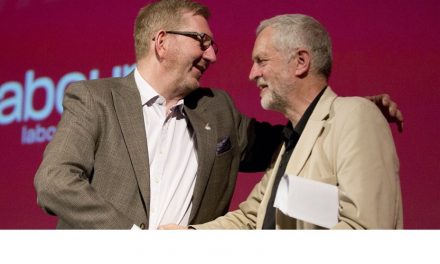
Hays – new chief shapes up for the future
IT WAS hardly a propitious start to Colin Matthews’s first day as chief executive of Hays. The day before he walked through the door in November last year, Hays issued a surprise profits warning that sent its shares tumbling.
It was only the second such warning in 16 months for the support services company. But such is the poor sentiment surrounding Hays and similar businesses that the company has an image of being a perennial deliverer of bad news.
Hays’s October 31 warning did not deter Matthews, who came from Lattice, the gas distribution business that has now merged with National Grid. His new employer argued that the profits warning was simply clearing the decks before the new boy began, but the move only served to underline the challenge that lies ahead for Matthews.
Hays’s shares have fallen from a high of 475p in 2000 to 93p last week. In common with the rest of the support services sector the company has been rocked by the downturn in the economy.
But Matthews’s appointment could herald a reversal of the company’s strategy for the past few years. Speaking at the annual meeting three weeks into his job, Matthews signalled that he might break up the support services group.
The newcomer has initiated a comprehensive review of strategy, conceding that there had been pressure from the board of Hays and investors on the question of whether the company was in the correct shape for the future.
He made clear that the strategy review would lead to changes. And, in a phrase that gladdened the hearts of investors and analysts, he said that he would “not be defending the status quo”. Since making that statement the company has entered a state of purdah and has refused to meet analysts or journalists. For any hint of how Hays may look in future the market will have to wait until March, when the interim results are scheduled.
But while Matthews may be something of an unknown quantity to support services analysts, he does come with glowing reports from his previous employers. Sources at Lattice say that he was clearly chief executive material and would have got the top job there, had it not been for the merger with National Grid.
Lattice gave him the lowdown on cost-cutting and he gathered restructuring experience from his previous job at British Airways. Former colleagues say he is not the sort of person to shirk a challenge or duck difficult decisions. On a personal note, one says: “He has charm, is highly intelligent, analytical and thoughtful. If a tough job needs doing, he is the man to do it.”
Hays’s recent history has exacerbated the challenge now facing Matthews. The company has been without a chief executive for 18 months, after John Cole, managing director at the time, paid the price for a surprise profits warning. Ronnie Frost, Hays’s founder and executive chairman, said that the board had lost confidence in Cole. But analysts were concerned by the evidence of management problems, which were exacerbated by the way Frost dominated the board.
The time it took to find a replacement for Cole only served to worsen the impression that there could be something seriously amiss at the company. And at least one candidate is understood to have slipped through Hays’s fingers at a late stage. There is a feeling among analysts that operating without a permanent chief executive for so long has taken its toll in testing markets.
Operationally, the personnel division has suffered — although not as badly as some of its rivals — from the downturn in the recruitment sector. The logistics division has also performed particularly badly, and in the most recent trading statement the company revealed that its mail business has been hurt by some very aggressive pricing from Royal Mail.
In terms of strategy, Hays’s approach under Frost was to focus the company on three broad areas of operation: logistics, personnel and commercial. A separate mail and courier division has now been carved out of the commercial division, which covers document storage and business process outsourcing.
However, the conglomerate model is largely discredited now and the feeling among observers is that the company should focus on one or two of its strongest operations. The staffing business is the best performing part of the group, and analysts have argued that concentrating on that while demerging or selling the other operations would help to release its value.
The conglomerate strategy has been undermined by the company’s inability to cross-sell contracts across its business areas. Analysts are sceptical as to whether there really are any synergies between the logistics unit and the rest of the business, the reason usually cited for retaining the division.
Hays’s success in its operations — it does have leading positions in the markets it is in — has been largely founded on the growing popularity of outsourcing. In the past Frost argued that recession was the perfect environment for outsourcing specialists, but there is growing evidence from the support services sector that recession does not encourage a company to rush to outsource. Rather, Hays’s is a cyclical business, vulnerable to a downturn in economic activity.
The admission, in the last profits warning, that it wanted to prioritise moving out of the “commodity” or “less profitable” segments within its operations, speaks volumes. Should Matthews opt to break up the conglomerate, he has the problem of selling struggling businesses in a market that is very cautious of mergers and acquisitions. It is doubtful that either the mail or logistics businesses would attract much of a premium at this stage.
However, retaining the businesses for sale later could lead to their continued deterioration. Whatever route he opts for in March, it is unlikely that Hays will remain so unwieldy by this time next year.
History
Hays’s origins can be traced back to the 17th century, when its activities involved the ownership and management of wharves and warehouses on the south bank of the River Thames. After joining the stock market in 1958, the company expanded in the mid-1960s into transport and storage.
The company’s traditional businesses continued to decrease in importance, and its last wharf in the Pool of London was closed in 1969. During the late 1970s, Hays further diversified into chemical distribution and document storage.
In 1975 St Martins, which at that time owned 34 per cent of Hays, was acquired by the Kuwait Investment Office (KIO). St Martins subsequently bought the remaining shares in Hays and transferred the company’s South Bank properties to its own property division. Following the takeover, Hays made a number of acquisitions in various disparate activities. In 1981 Hays acquired Farmhouse Securities, a private food distribution company that was substantially owned by the Frost family. Ronnie Frost joined the company and became chief executive two years later.
From 1983 to 1987 Hays sold many of its non-core manufacturing interests and certain other distribution businesses, and acquired significant businesses in chemical distribution and office support services. A third core activity, personnel, was established in 1986 when Hays acquired the Career Care Group.
In November 1987 the executive directors, led by Ronnie Frost, and with the involvement of six other senior managers, organised the purchase of KIO’s interests in Hays.
Hays returned to the stock market in October 1989, and joined the FTSE 100 in December 1996.
Who's who in the boardroom
Hays’s chairman, Bob Lawson, took over from Ronnie Frost, who retired in July 2001. He joined Hays as a non-executive director in 1998 and became deputy chairman a year later. An engineer, he spent ten years as chief executive of Electrocomponents, where he remains non-executive chairman.
Colin Matthews, chief executive since November 2002, joined from Lattice Group where he was director responsible for managing Transco, the owner and operator of Britain’s gas pipeline network. He previously held senior positions with British Airways and General Electric (USA).
Hays’s non-executive directors include Pierre Danon, a director of BT and chief executive of BT Retail. A civil engineer with a Masters in Law, he was previously president of Xerox Europe and was also a governor of the European Foundation for Quality Management.
Lesley Knox, a non-executive director since April 2002, is a founding director of British Linen Advisers, the bank, and sits on the boards of Glenmorangie, HMV, MFI and the Alliance Trusts. She was previously a director of Kleinwort Benson. Christopher Taylor, was previously a non-executive director of DBS Management, JBA Holdings and
The Economist. Prior to that he was finance director of Smiths Industries.
He has an MBA from Stanford. Brian Wallace, Hays’s senior independent director, is deputy chief executive of Hilton. He was formerly group finance director at Geest.
Hays’s executive directors include Neil McLachlan, group finance director; Xavier Urbain, a former director of Mayne Nickless; Denis Waxman, managing director of Hays Personnel Services; and Graham Williams, originally a founding director of Barclays Private Capital.
The company in detail
Hays has a market capitalisation of about £1.6 billion and employs 27,000 people in the UK, Europe and North America. The business comprises four divisions: personnel, commercial, mail and express, and the logistics division.
Its personnel operation provides temporary and permanent recruitment services and runs whole human resources departments. The commercial business is a market leader in business process outsourcing, while the mail business provides specialist mail services to businesses including the legal profession. The company has also won the first long-term mail licence from the postal regulator, which will allow it to compete with the Royal Mail on delivering post to specific business addresses.
Hays gave warning last November that its profits for 2002-03 were likely to be 10 per cent to 15 per cent lower than the £222 million that was anticipated by analysts. The personnel business, favoured for demerger, is likely to make £108 million in the full year — more than the three other divisions combined.
The Times verdict
Social responsibility¹ 4/10
Fat-cat quotient² 8/10
Financial record 9/10
Share performance 0/10
Attitude to employees 4/10
Strength of brand 5/10
Innovation 6/10
Annual report 6/10
City star rating 4/10
Future prospects 5/10
Total 51/100
¹Social responsibility is evaluated by Pirc. ²The “fat-cat” quotient, in which best boardroom pay practice scores highest, is provided by CEBR.
How we reached our decision
RICHARD GREENWOOD, economist with the Centre for Economics and Business Research (CEBR), said: “Hays’s remuneration policy is designed to ‘attract, develop, retain and motivate’ the senior executives of the group relative to other large, UK-based international businesses of similar size and complexity. Hays board is of an average size, though non-execs are in a minority.
“Colin Matthews, the chief executive, only took up his post in November 2002. We have, therefore, compared the pay of his predecessor, John Cole, with the output of the ‘fat-cat’ model. Mr Cole was paid much as one would expect for the executive head of a FTSE company of Hays’s size and performance.
“The board were slightly overpaid due to the relatively large number of executives. The conditions set for exercising long-term share options were amongst the most stringent we have encountered.”
Peter Southwood, acting policy executive at Pirc, the corporate governance consultancy, said: “Hays addresses corporate social responsibility (CSR)issues through its ‘Sustainability Programme’ and has assigned board level responsibility for community, employment, human rights and environmental issues. Stakeholders have been identified over all CSR areas and there are systems in place to elicit the views of some, but not all, of these groups, particularly employees.
“Policies commit to measurement and monitoring but there are no performance indicators, except statutory ones, or specific targets which have been disclosed for these areas as yet. No internal use of independently certifiable standards is apparent in the implementation of CSR policies.”













